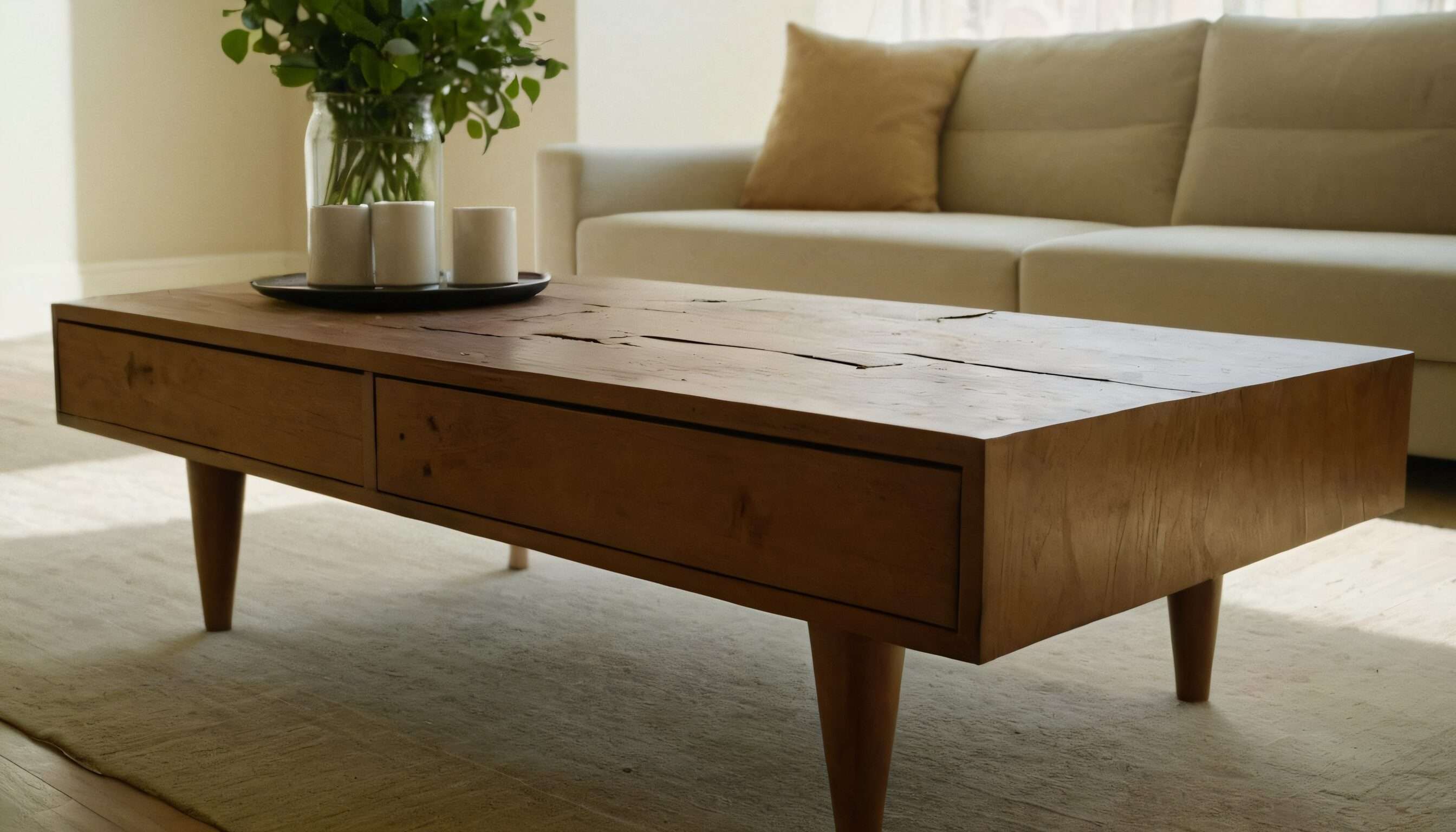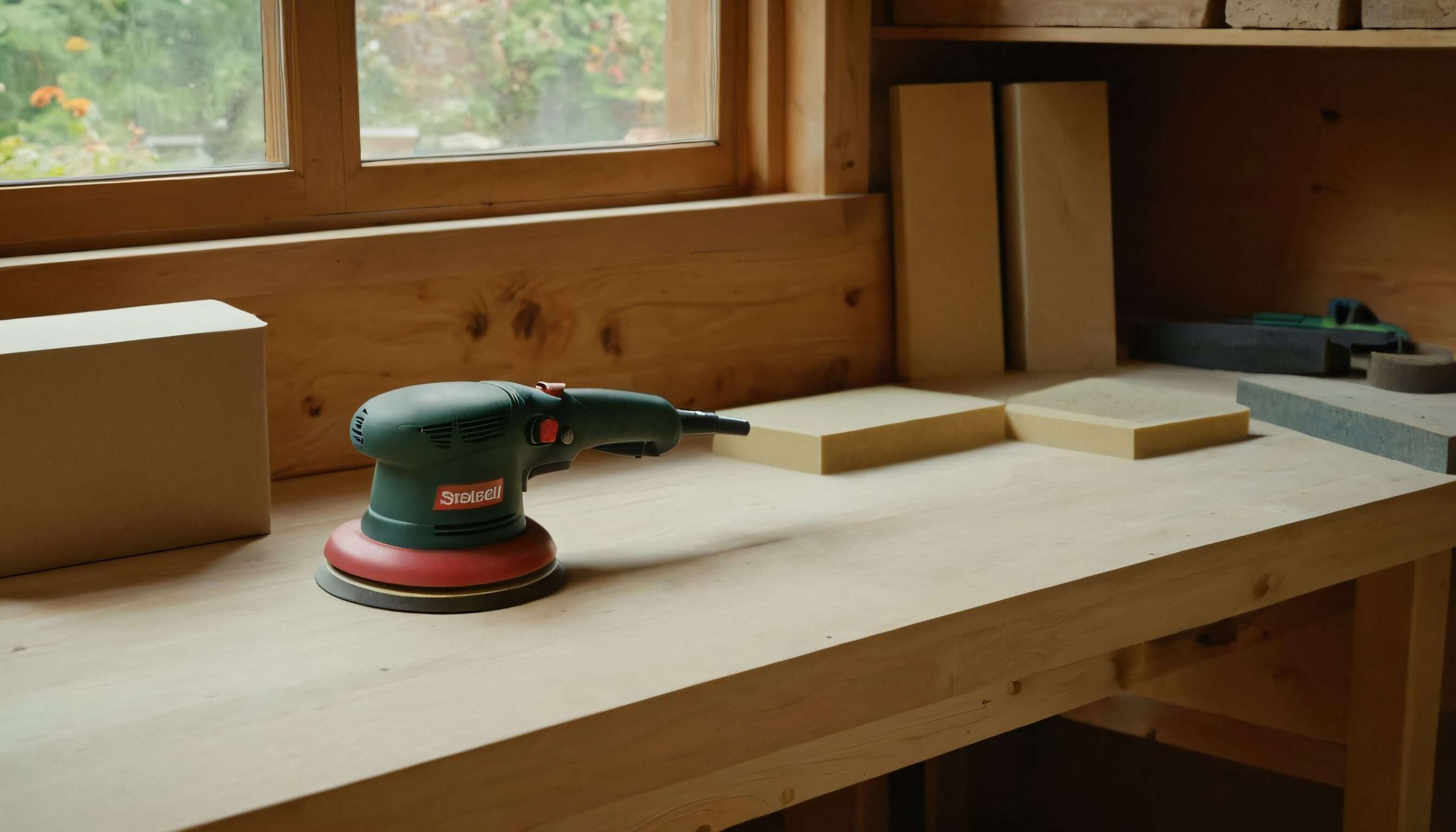In This Article

Ah, wood furniture – it’s timeless, elegant, and totally capable of turning your home into a cozy, Pinterest-worthy haven. But, as much as we love it, wood can be a little, well… fragile. Whether it’s the accidental coffee spill, a rogue pet claw, or a friend who’s just a little too enthusiastic with the tableware, scratches happen. But fear not! There’s no need to bid farewell to your beloved wood table. With a few handy tricks and some elbow grease, you can restore it to its former glory.
In this light-hearted guide, we’ll walk you through everything you need to know about fixing deep scratches in wood tables. From quick fixes to more advanced solutions, we’ve got you covered. So grab your tools, roll up your sleeves, and let’s get to work! (And don’t worry, we’ll keep it fun.)
In This Article
The Lowdown on Deep Scratches: What You’re Really Up Against

Before we jump into the solution, let’s take a moment to understand what we’re dealing with.
When your wood table gets scratched, it’s not just about an ugly line on the surface. Oh no, my friend. A deep scratch can go beneath the protective finish, damaging the wood underneath. And while a light scratch can be annoying, deep ones are a little more serious. They’re like the equivalent of a bad haircut – a little too noticeable for comfort.
Why It Happens:
- Accidents: You’ve probably experienced this: you accidentally scrape your fork, knife, or phone across the table. (Oops.)
- Pets: Pets love to play on wooden surfaces, and sometimes they get a little too… enthusiastic with their claws.
- Furniture Movement: Moving furniture without proper care can leave nasty scratches behind.
Deep scratches aren’t just about looks; they can affect your table’s surface and, if left untreated, lead to more damage down the line. But don’t worry, we’ve got the fixes you need to turn that table back into the centerpiece it deserves to be.
How to Fix Deep Scratches in Wood: Top Repair Methods
There’s no need to panic! Whether your scratch is as deep as the Grand Canyon or just a little nick, we’ve got some solutions for you. From the quickest fixes to more detailed repairs, let’s dive into it.
Wax Filler Sticks: Your Secret Weapon

Let’s start with the easiest and quickest fix: wax filler sticks. These little guys are like the superhero of scratch repairs. They’re super easy to use, and you don’t need any fancy tools – just grab a wax stick and get going!
How to Use Wax Filler Sticks:
- Pick the Right Color: Choose a wax stick that matches your wood’s color. It’s like picking the perfect lipstick shade – you want it to blend, not stand out!
- Fill the Scratch: Rub the wax directly into the scratch, pressing it in to fill the gap. Think of it like filling a pothole, but, you know, much smaller.
- Smooth It Out: After you’ve applied the wax, use your finger or a soft cloth to blend it into the surrounding area. You want it to look like it was never there.
- Wipe Away Excess: Use a clean cloth to wipe off any extra wax. Don’t leave it too thick – we’re going for a natural, polished look.
- Let It Set: Allow it to dry for about 30 minutes, then give it a gentle buff to add a nice shine.
Wax filler sticks are ideal for small scratches, and they’re quick enough that you’ll be back to using your table in no time. But if you’ve got a deeper gouge, you might want to try something else.
Wood Fillers: The DIY Hero

For those of you with more severe damage (we’re talking deep gouges or scratches that go past the finish), wood fillers are the way to go. It’s like giving your table a little makeover – one that’ll last for years to come!
How to Use Wood Fillers:
- Clean the Scratch: Before doing anything, clean the area. A dirty surface is like trying to apply makeup to a dirty face – not a good look.
- Apply the Filler: Use a putty knife to spread the wood filler into the scratch. Don’t be shy – fill it up, and then some! We want it to completely cover the scratch.
- Smooth It Out: Once the filler is in, smooth it with the putty knife so that it’s level with the surface of the table. You want it to be as even as possible.
- Let It Dry: Wait for the filler to dry. This usually takes about 30 minutes, but check the instructions on the product for specifics.
- Sand It Down: Once it’s dry, use some fine-grit sandpaper (180-220 grit) to smooth the area. Light sanding will leave it looking as smooth as silk.
- Stain or Finish: If the filler doesn’t match your wood color exactly, apply a stain or finish. This will make the repair disappear into the wood like magic!
Wood fillers are perfect for deep scratches or gouges and will give your table a seamless,
The Crayon Trick: Yes, Really

Steam isn’t just for clothes – it can actually help you fix raised grain in your wood. This happens when the scratch causes the wood to swell, leaving a rough, uOkay, we know this sounds a bit strange, but hear us out. You can use a crayon to fix small scratches on your wooden table. No, it’s not a joke! Crayons can fill in scratches and blend them nicely, leaving your table looking pretty good for a quick fix.
How to Use Crayons for Scratches:
- Pick the Right Color: Just like with wax sticks, pick a crayon color that matches your wood. It’s like playing matchmaker for wood and crayon.
- Rub It In: Rub the crayon over the scratch. Press it in, and make sure the wax fills the gap.
- Smooth It Out: Use a plastic card (like an old credit card) to smooth the crayon into the surrounding wood.
- Buff the Area: Once the crayon’s in place, give the area a quick buff with a soft cloth.
This method is great for smaller scratches or when you’re in a pinch, but keep in mind that it’s not a long-term solution. It’s a temporary fix, perfect for when you want a quick and easy repair.
The Steam Method: Not Just for Clothes

Steam isn’t just for clothes – it can actually help you fix raised grain in your wood. This happens when the scratch causes the wood to swell, leaving a rough, uneven surface. But fear not! A little steam will smooth it right out.
How to Use the Steam Method:
- Damp Cloth: Soak a clean cloth in water, wring it out, and place it on the scratched area.
- Apply Heat: Set your iron to medium heat, and press it gently onto the cloth for about 30 seconds. The steam will raise the wood grain, helping it smooth out.
- Sand It Down: Once the steam has worked its magic, lightly sand the area with fine-grit sandpaper to finish the job.
This method works wonders for dents and gouges that have raised the wood grain. It’s a quick and effective way to restore your table’s smooth finish.
Protecting Your Table from Future Scratches: Prevention is Key

Once you’ve fixed your scratches, you’re probably thinking, “How can I prevent this from happening again?” Well, here are a few tips that will help you protect your table from future damage and keep it looking fabulous.
Simple Protection Tips You’ll Love
- Use Coasters and Placemats: Protect your wood table from rings and scratches by using coasters and placemats. It’s a simple step that can make a world of difference.
- Trim Your Pets’ Nails: If your furry friends are causing the damage, make sure their claws are well-trimmed. It’s like giving your table a little pet protection plan.
- Move Furniture Carefully: When rearranging furniture, always lift, don’t drag. Furniture sliders or felt pads under the legs will help avoid any accidental scratches.
Why Regular Maintenance is Your Best Friend
Regularly cleaning your wood table and addressing minor scratches can help keep things looking pristine. Don’t wait for scratches to get deep – a little maintenance goes a long way.
Conclusion

There you have it – a complete, fun guide to fixing deep scratches in your wood table! Whether you’re using wax filler sticks for a quick fix, applying wood fillers for a more serious repair, or just giving your table a little steam treatment, you can now restore your wooden masterpiece. And, with a few simple protective tips, you’ll keep it looking beautiful for years to come.
Now go ahead, take a moment to appreciate your handy work. You’ve earned it!
Additional Resources
- 6 Ways to Remove Scuff Marks and Scratches from Your Wooden Table
- How to Fix Deep Scratches in Wood
- How to Fix Deep Scratches in a Wood Table
- How to Remove Scratches from Wood Furniture
FAQs
Can I use furniture polish to fix scratches?
Furniture polish can help with minor surface scratches, but it won’t work on deep gouges. For deeper scratches, use wax sticks or wood fillers.
How do I know if a scratch is too deep to fix?
If the scratch goes all the way through the finish and into the wood, it’s considered deep. If it’s just on the surface, you might be able to fix it with wax or polish.
Will these fixes work on all wood types?
Most wood furniture can be repaired using these methods, but some types of wood may require different care. Always test your repair methods in an inconspicuous spot first.
How often should I apply protective wax or finish to my table?
It’s a good idea to apply wax or finish every 6-12 months to keep your wood protected and looking great.






